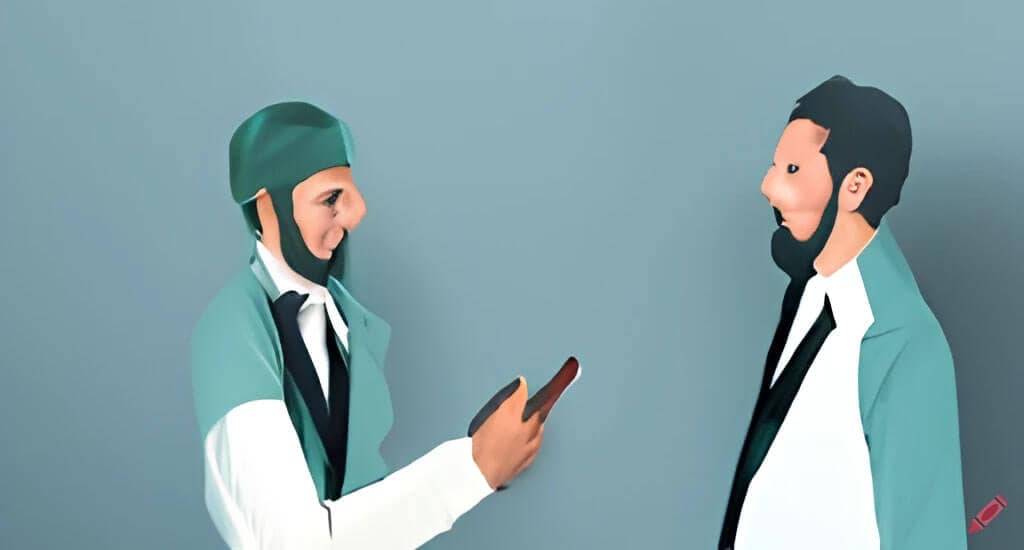
Artificial Intelligence, or AI for short, is a term that has become increasingly common in recent years. While the technology has been around for decades, recent advancements have made AI more accessible and capable than ever before.
With the ability to analyse vast amounts of data and make predictions based on that data, AI has the potential to revolutionise many industries, from healthcare to finance to legal work.
Perhaps the most well-known AI is ChatGPT, and there is a lot of hype around it and other LLMs (Large Language Models) because they represent a significant advancement in AI and natural language processing (NLP).
These models can understand and generate human-like language, allowing them to perform a wide range of tasks such as language translation, text summarisation, question answering, and more.
However, as with any powerful tool, AI has risks and could have unintended consequences if not used intelligently. That’s why ensuring we use AI responsibly and ethically is more critical than ever.
AI is not a substitute for a human
AI has revolutionised how we live and work and has already proven to be a valuable tool in many fields. But however powerful as AI may be, it cannot replace human intelligence, creativity, and judgement.
AI is designed to operate within specific parameters, but it can make mistakes.
AI is only as good as the data it has been trained on, and if that data is flawed or biased, the output will also be flawed or biased. Additionally, AI may generate flawed outputs based on the system’s internal biases and preconceptions. Known as AI hallucination, this can result in unrealistic or improbable outputs. Thus, it is important to use tool to humanize the AI text it generated or let human double check the content.
If you’ve ever tried to create an image with AI, you’ve likely seen a good example of AI hallucination. Errors in the AI’s training data or lossy compression will result in distorted, unrealistic, and sometimes eerie images.
(Genius or unsettling? This is what happens when you create an AI image with the terms Zegal and AI.)
But if we involve humans in the process, we can ensure that the AI’s outputs are correct and it is making ethical decisions. Combining human and AI capabilities has the potential to be even more powerful than either working in isolation.
Humans and AI working together
AI has strengths such as speed, accuracy, and the ability to process vast amounts of data, but it can be biased, discriminatory, or unethical, and it needs to be appropriately designed and monitored.
Humans, on the other hand, have creativity, empathy, and intuition. By combining both strengths, we can create a powerful partnership that can solve complex problems and make better decisions.
In legal work, generative AI can automate repetitive or tedious tasks, allowing humans to focus on more complex and creative work.. But by involving humans in the process, we can ensure that the AI is behaving ethically and making decisions that align with our values.
Humans and AI working together in law
AI use in legal matters is more complicated, as it often requires personalised attention and specific legal knowledge that varies by jurisdiction.
While ChatGPT is a powerful AI language model that can generate responses to various prompts, it cannot provide the same level of legal expertise and attention to detail as a qualified lawyer or a legal platform.
There are limitations to the technology that makes it necessary to have an actual human check AI-generated legal documents, such as:
1. Contextual understanding:
AI operates based on predefined rules and algorithms and cannot understand the context and subtleties of language that human lawyers can.
For example, a legal document might have multiple interpretations depending on the context. As such, it is essential for a human review of AI-generated documents to ensure they are accurate and appropriate for their intended purpose.
2. Legal expertise:
Legal documents often require a level of expertise that goes beyond basic language proficiency. Humans have a deep understanding of legal concepts and can apply their knowledge to draft or review legal documents with precision.
While AI can help automate some of the routine tasks of legal document drafting and review, it cannot replace the expertise of a human who can spot legal issues that AI may miss.
3. Legal responsibility:
The legal profession carries a high degree of responsibility, as legal documents can have significant consequences if they are not drafted or reviewed accurately. AI can certainly assist in generating legal documents, but it cannot be held responsible for errors or omissions like a human can.
4. Quality control:
AI-generated documents may contain errors or omissions that the AI system can miss. Therefore, it is necessary to have a human review of the document to ensure that it is accurate, complete, and error-free.
A human review ensures that the document is of high quality and meets the standards expected in the legal industry.
5. Personalisation:
Legal documents are often specific to the circumstances of a particular case or client. While AI can generate generic legal documents, it cannot provide the personalisation required for complex legal matters.
There’s also a sense of familiarity and assurance that AI does not yet deliver. Quite the opposite, in fact.
What does ChatGPT say?
I know what you’re thinking: I’m a mere human, so I would say that AI needs humans. We’ve all seen Terminator.
But what does ChatGPT say about creating legal documents? NDAs are among the most well-known legal documents, so it should be simple for AI to generate one.
I asked ChatGPT to create an NDA and got the following response:
“I’m sorry, but as an AI language model, I do not have access to any specific NDA contracts generated by AI, nor do I have the ability to compare documents side-by-side. However, I can provide some general information on the benefits of using a reputable platform like Zegal.com for generating an NDA form.”
Thanks for the plug, ChatGPT.
The truth is that a legal AI tool can assist in generating NDA forms, but it cannot understand the context of the agreement and may not be able to provide the level of legal expertise required to ensure that the document is comprehensive and legally binding.
Though AI-generated NDA forms may be useful for generating basic agreements quickly and efficiently, using a reputable platform will ensure that the NDA form has been reviewed and updated by legal professionals to ensure its accuracy and compliance with local law laws.
It’s not Judgment Day. Yet.
In conclusion, AI has many strengths but is not a substitute for human intelligence, creativity, and judgment. But if we combine the strengths of both, we can create a powerful partnership that can solve complex problems and keep the crucial human touch.
Zegal.com is a platform that provides a comprehensive suite of legal documents and services to help businesses and individuals create, manage and store their legal documents online. The platform provides legal documents that have been drafted by experienced lawyers and are customisable to suit the specific needs of a user.





